If you have ever wondered what to wear winter hiking, in this post I will teach you how to layer for your winter hikes and share the best winter hiking clothes for women.
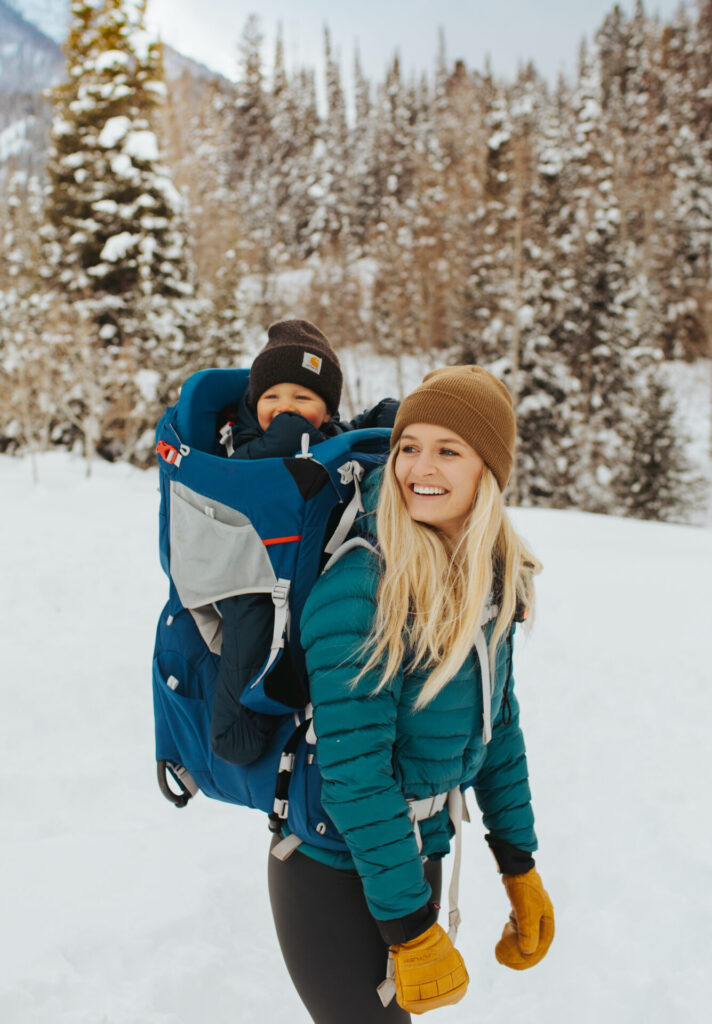
I’ve lived in Utah for about 11 years but have only been winter hiking for 7+ years. It took me years to learn to enjoy the cold and snow and one of the best things I did was learn how to properly dress for the cold. I’m excited to share my curated list of winter hiking clothes for women, and the tips that helped me gain an appreciation for the outdoors in these colder months so you know what to wear winter hiking.
Learning how to dress for the cold and what winter hiking clothes are best is so important for your safety and overall enjoyment. The key to dressing for a winter hike is layers. You don’t want to wear one big heavy coat and get sweaty or wear too little without the option to throw a jacket on top and get cold.
Now that I have the knowledge of what to wear winter hiking, I’m going to share with you the best winter hiking clothes that I use and wear on all of my winter hikes, and how to dress yourself for those varying temperatures and weather conditions.
*This post is not sponsored. Some of the links shared in this post may be affiliate links meaning I make a small commission off of your purchase (with no extra cost to you). This allows me to continue to create free content for my readers. Thank you for your continued support!
How To Layer Your Winter Hiking Clothes
When layering your winter hiking clothes for an adventure, you typically have 3 layers that you wear: Your base layer, mid layer, and outer layer. You may not need all three layers depending on the temperature and how much energy you are exerting, and you may need more for those extreme temperatures, but it’s a good start.
When choosing what clothing you should use for these layers, you want to make sure they are made of materials that will keep you warm and dry. Some examples of good materials to use are wool, polyester, bamboo, spandex, and nylon.
As you hike, make sure you are paying attention to your body’s temperature. If you are feeling hot, take off your outermost layer to avoid sweating and getting your clothes wet. If you are starting to get cold, throw on another layer so you don’t have to try and warm back up.
Typically I find that I like to start off at the trailhead feeling cool because I will likely warm up as I start hiking. Once I’ve reached the top and am ready to start hiking down, I will throw on another layer because I am not exerting as much energy on the down hill.
A material you should almost always avoid when choosing what to wear winter hiking is cotton. Cotton, while breathable and comfortable, holds onto moisture when it gets wet. That means it stays wet and will chill your body, potentially leading to hypothermia especially when worn against your skin as a base layer.
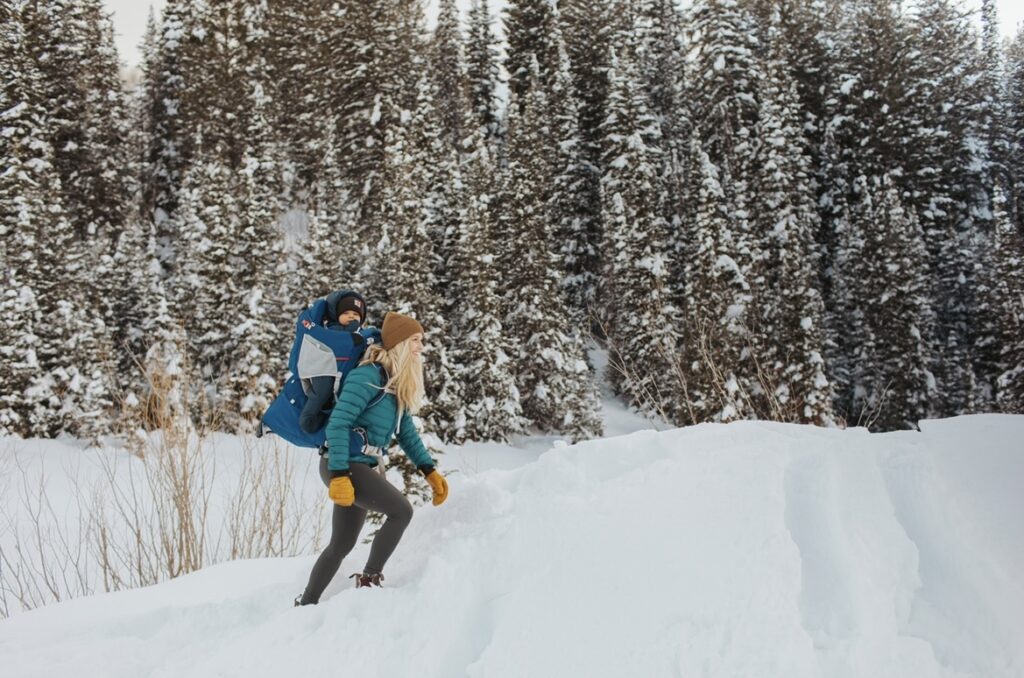
Winter Hiking Clothes for Women- What I Wear Winter Hiking
Here are all of my favorite winter hiking clothes for women that I personally wear on my winter hikes. I have been winter hiking for 7+ years and I have had many of these pieces that long. I run cold and have put all of these pieces through to the test. They keep me warm, hold up to many wearings and washings, and are well worth the investment.
Base Layers
When you are layering your winter hiking clothes, the base layer is the piece of clothing worn against the skin. It wicks away the moisture from your skin to keep you dry. When you are out winter hiking, you want to use a material that is not cotton as cotton holds onto moisture, keeps you chilled, and can lead to you getting hypothermia.
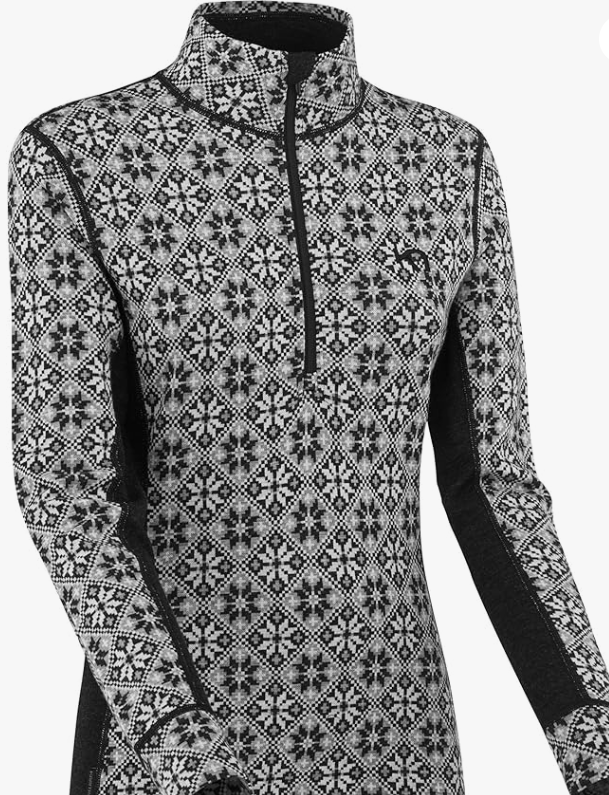
Kari Traa Rose Base Layer: Kari Traa is a women owned company that only makes clothes for women. I have a few of their pieces and love them all. I love their merino wool base layers and the Rose half-zip has been my go to for years (I’ve had my top for about 6 years and it’s still in perfect condition). Pair it with the matching high-waisted bottoms and it’s the perfect set for skiing for hiking!

Kari Traa Silja Base Layer: This is another of my Kari Traa base layers I wear all the time. It’s also what I wore throughout my whole pregnancy. I bought this top with the matching high-waisted bottoms in a size up when I was pregnant and it fit me until the day I gave birth. I still wear it now even though it’s a little big so I just tuck the top into the bottoms.
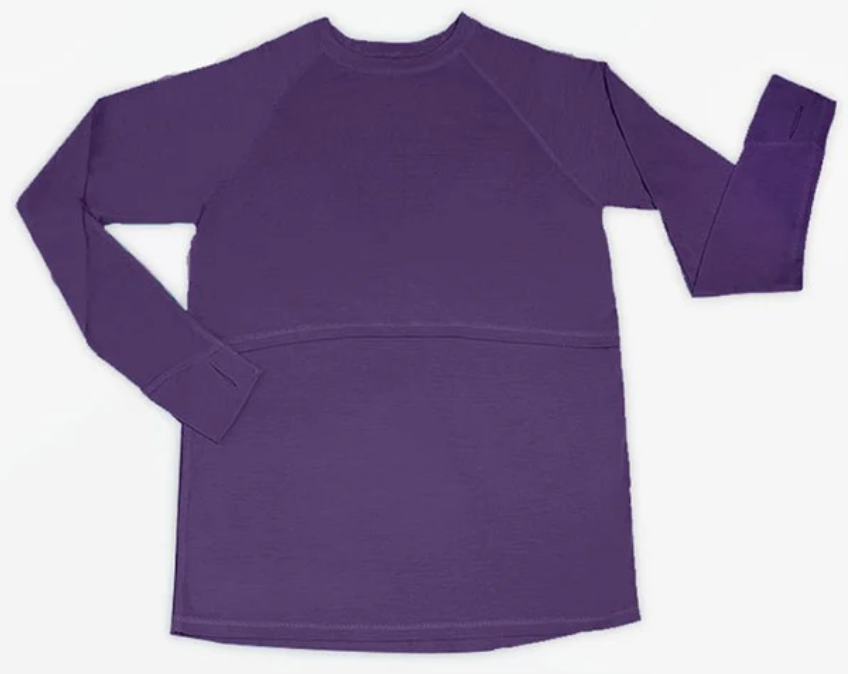
Iksplor Merino Wool Nursing Shirt: I have two of these long sleeve shirts and I love them. I wear them hiking and camping. They run big so I would recognize sizing down. I am typically a size small, and I was able to wear the size small up into my third trimester without it feeling tight. The xs fits me much better. (My discount code is HaileyOutside).

REI Synthetic Base Layers: If you are looking for a good budget base layer option, I would go with this synthetic base layer top with the matching bottoms. It’s a polyester/spandex blend and will perfectly do the job of wicking away moisture while you’re hiking.
Mid Layers
The mid layer traps in the heat to keep you insulated and warm and is important to wear when the temperatures are really cold. While all of these options are technically mid layers, I often wear them as my outer layer even when it is snowing because we have a dry snow here in Utah and I tend to get hot with too many layers.
I have never worn a mid layer pant option. I find that when it’s really cold, a base layer and waterproof pant is sufficient for me. If you are still cold when out winter hiking with that, I would double up on your base layers to make it all fit under your outer layer pant.

REI Trailsmith Fleece Jacket: This fleece jacket is one of my favorites. It’s soft, warm, and the look is very cute. I also love that it has zipped pockets. I bought mine in a size up for a more oversized fit but if you plan on mostly layering with it, I would buy your regular size.
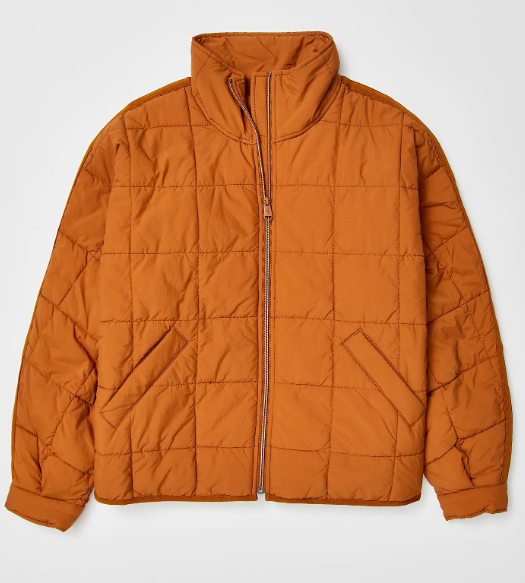
Free People Movement Pippa Jacket: I wear this orange jacket a lot because I think it’s so cute. It’s warm and made with high quality materials. But I did size down it it because it’s oversized and because of that it’s a tiny bit short. The bottom is very open so it can let in drafts but overall a great jacket if you’re looking for something you can wear on the trail as well as out on the town.
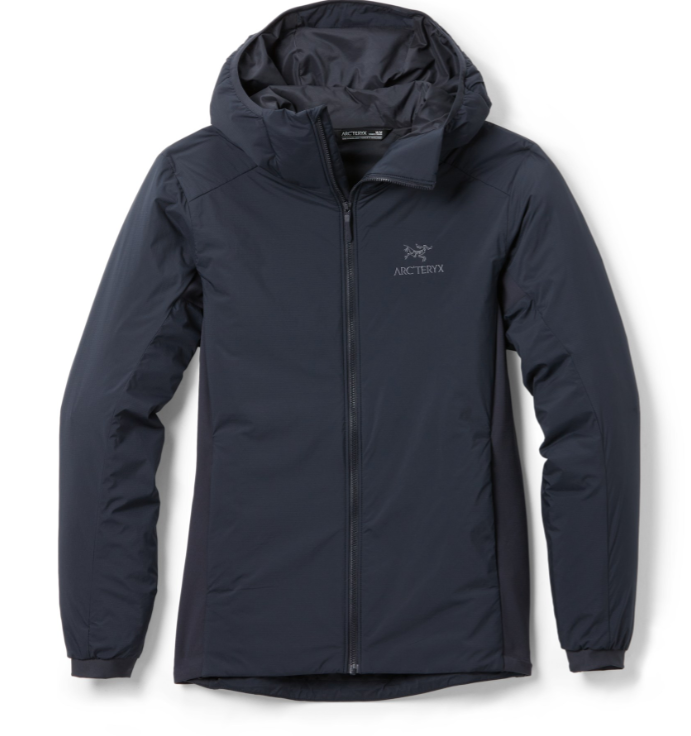
Arct’eryx Atom LT: Of all of these midlayers, I have had this jacket the longest–about 6 years. This is probably my most versatile and worn jacket. I convinced my husband, both of my parents, and even my brother in law to get this jacket and they all LOVE it.
It is a synthetic jacket but it doesn’t have seems running up it with small sections of insulation. Instead, it is just one large sheet of insulation and which is great because it reduces cold pockets. This has been my go to hiking jacket for years and I know it will be for years to come.
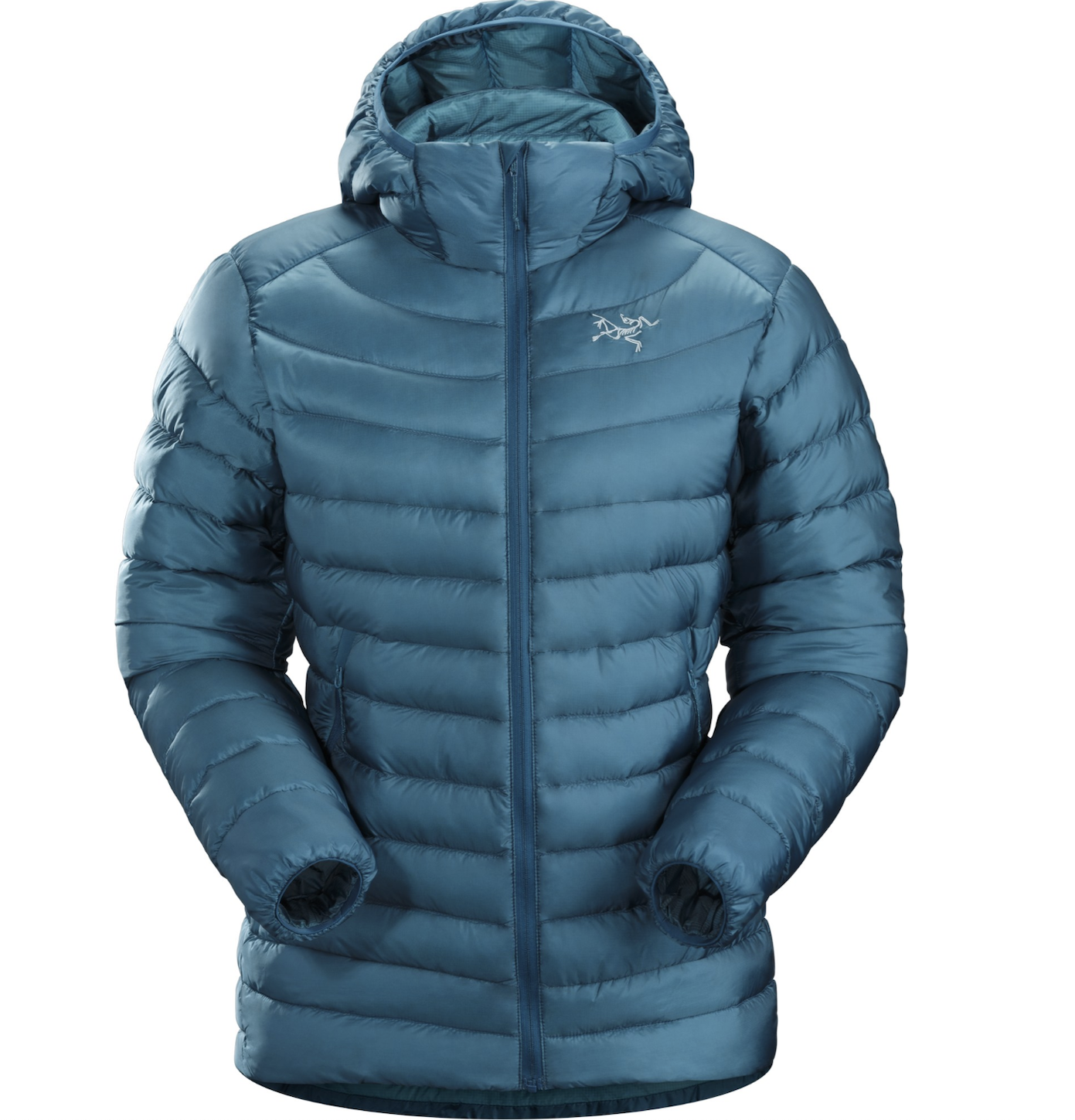
Arcteryx Cerium: I have had this jacket for a few years and it is another one of my most worn. It is a down jacket so if you live somewhere with a lot of wet snow, I definitely would recommend a waterproof layer on top. But It is extremely warm and lightweight. It is great for those extra cold days or days I am not exerting a lot of energy.
It is a little more fitted so if you are in between sizes, want to layer underneath it, or don’t want it as fitted, I would recommend sizing up.
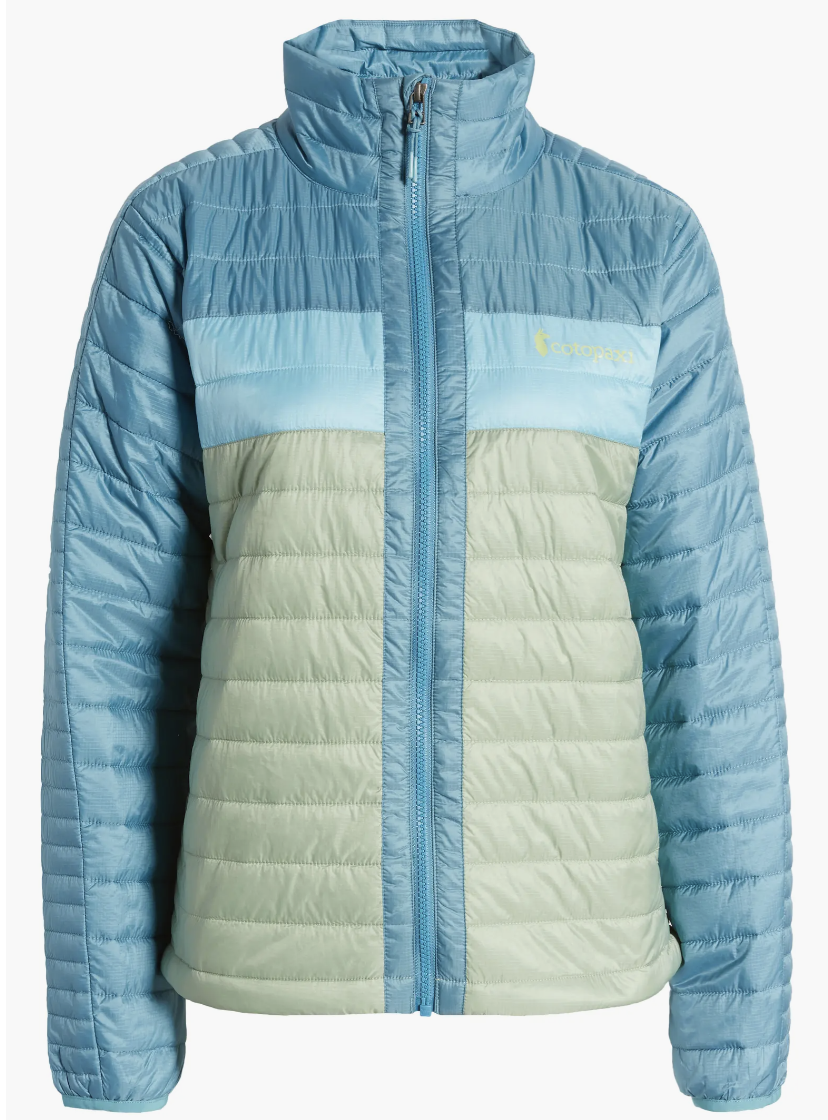
Cotopaxi Capa Jacket: I love this synthetic jacket. It’s lightweight but warm and I am able to layer under it without feeling super constricted. Synthetic insulated jackets are a great option in the winter because even if they get wet, they still help keep you insulated, unlike down.

Rei Down Jacket: This down jacket is a great budget option and one that I love and wear often. (See picture below). It is lightweight but warm, it doesn’t have a hood which can be nice if you want to wear your hair down or layer on top with another jacket. It goes on sale often so check back if you don’t see it on sale right now!
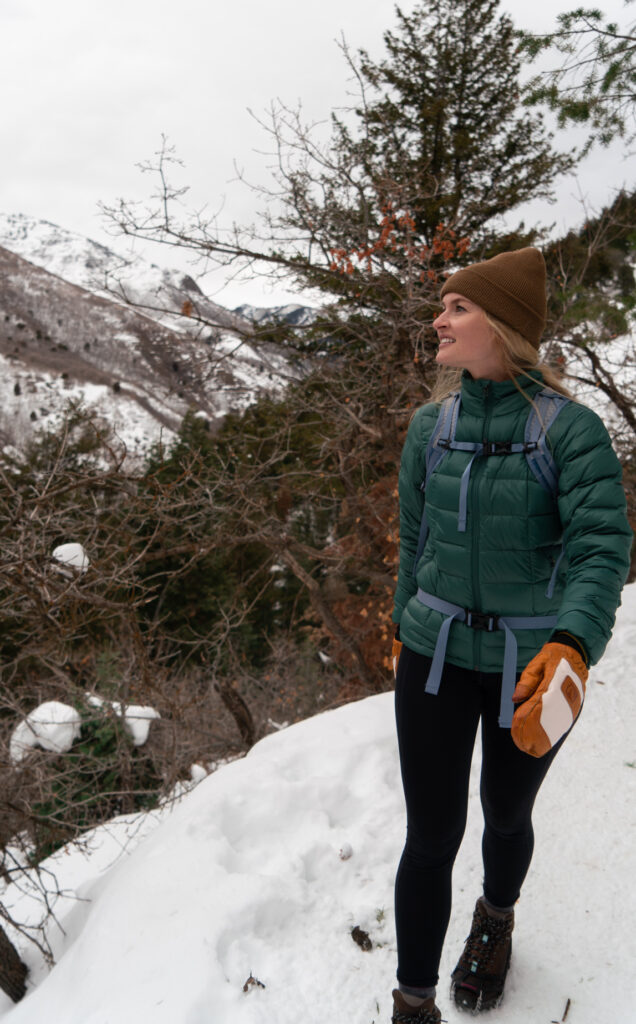
Outer Layers
The outer layer should be a material that will protect you from the winter weather conditions. So if it is snowing or raining, it should be waterproof. If it’s windy, it should be able to break the wind.
I don’t wear a waterproof outer layer often when I hike because here in Utah our climate is pretty dry so our snow isn’t wet. I also find that I sometimes get too hot. But on days where the wind is really blowing the snow, I will wear one of these to stay warm.
Jacket

REI Rain Jacket: Often times a rain jacket is all you need to protect you from the elements. I love this inexpensive rain jacket from REI.

Arc’teryx Beta LT: I actually have the Arc’teryx Zeta SL, but it looks like it’s being discontinued. This is the closest jacket too it and it’s an amazing all mountain jacket. It’s totally waterproof, even the zippers, and will do a great job blocking that wind.
Pants
I like to wear at least a water resistant pant, if not something totally waterproof. Waterproof pants are really nice if it’s a wet, slushy snow. Or if I plan on sledding or playing in the snow with my kids.

Kari Traa Ane Pant: These waterproof pants are great for winter especially if you are carrying a kid. I love that the waist is adjustable and there are pockets on the thighs. Often times when babywearing, you can’t access your regular pockets because the waist strap is over them, but with these I can put what I want easy access to right in those thigh pockets.
If I am sledding or going to be sitting a lot, these being waterproof are great.

REI Trailmade Hiking Pants: I have had my REI hiking pants for years and wear them year round. These are an updated model but till just as good as my pair. They are water resistant so fine for dry snow and warm enough with a base layer underneath.

Leggings: I often times just wear leggings on mild winter days. Especially on days I am going to be working hard and getting warm. If you want an extra warm pair of leggings for your winter hikes, try these fleece lined leggings out.
Extremities
Making sure you have the proper footwear, warm hands, and a head covering is just as important as your core layers. I run cold and have gone through many different winter hiking accessories and these have lasted the test of time.
Hands
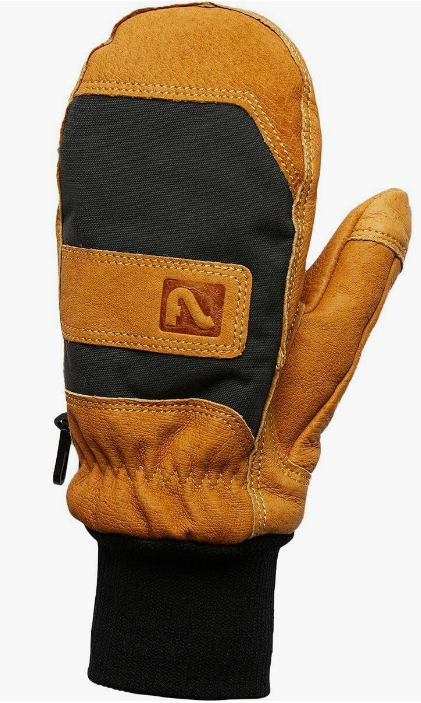
Flylow Unicorn Mittens: I almost always hike in an insulated mitten because my hands get extremely cold. I really like these Flylow mitts because while they are leather, they aren’t stiff but actually really soft.

Smartwool Glove Liners: I decided to try out these merino wool glove liners under my mittens this year and I’m surprisingly satisfied. Usually I can’t wear any kind of glove because my fingers need to be by each other to stay warm (hence the insulated mittens). But when I hike with my kids I have to take my mittens off a lot to help them with their snacks, zip up a jacket, or something like that. I leave these liners on and my hands don’t freeze when I take off the mittens.
Feet
The two pairs of insulated hiking boots I wear are both discontinued unfortunately. But I will recommend some that are very highly rated and I would love to wear. One thing I would recommend if you are looking for winter hiking boots, is see if the boot your currently wear comes in an insulated version. It will likely be a great fit for you.
You also may not need an insulated boot. For my first few years of winter hiking, I just wore my waterproof hiking boots with thick wool socks and it was fine. But on really cold days my feet did get cold and now that I hike at a slower pace with my kids, having insulated boots has made a huge difference.

Danner Mountain 600 Insulated Boot: I love my Danner hiking boots and these insulated version come highly rated. I have friends who wear them in the winter. Danner has been making boots for years and know how to make a top notch boot.
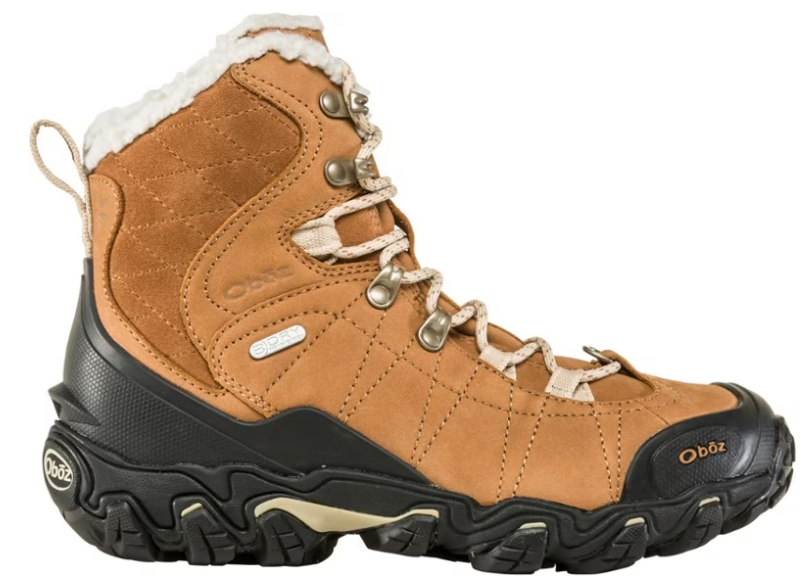
Oboz Bridger 7″ Insulated Boot: I’ve had my eye on these for a while now. For an insulated boot, they are lightweight but still come up high to keep the snow out of your boots.

Smartwool socks: I have worn Smartwool socks for years. There are a lot of different heights and thicknesses, but I prefer the hike light crew length for my hikes. If you want something a little thicker, I would try the Smartwool Full Cushion Hiking sock.
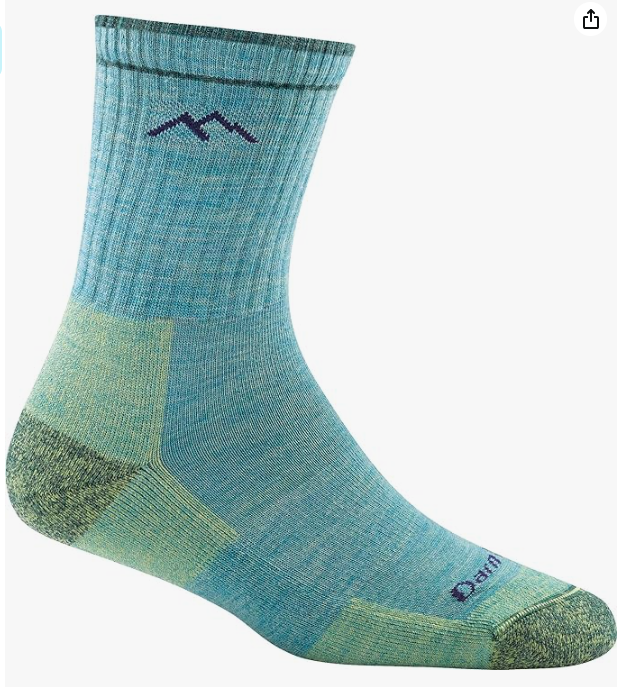
Darn Tough Socks: Darn Tough socks are another amazing wool sock you can’t go wrong with. They have an amazing warranty where if you wear a hole in your socks, you can send them in for repair or they will send you a credit to purchase a new pair.

Kahtoola Microspikes: I have had my microspikes for 6 years now and they are still in great condition. I have hiked hundreds of hikes with them and have never replaced them. I have never found another brand that is as high quality as Kahtoola. These are great for packed down or icy trails. If the snow is too deep, you’ll want snow shoes.
Head
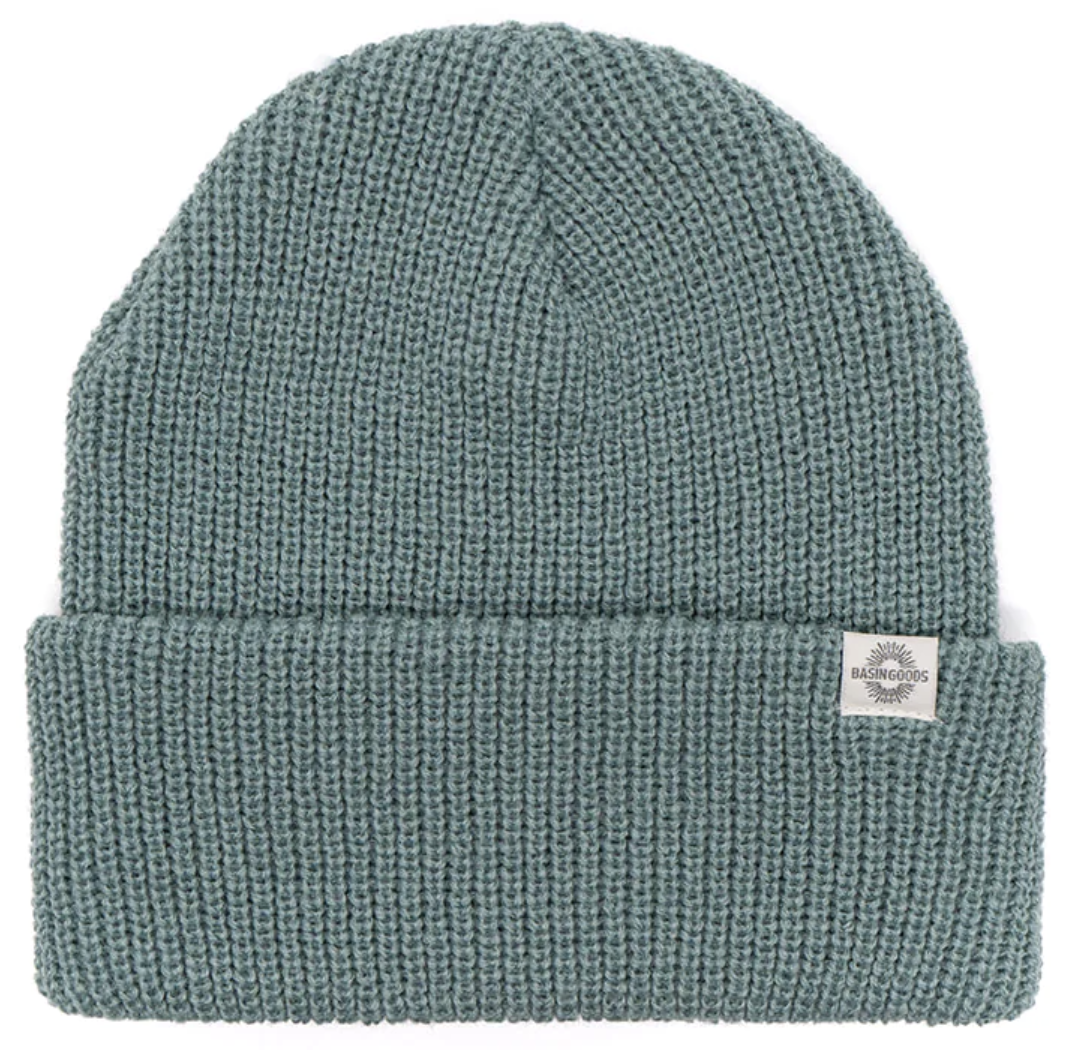
Basin Goods Beanie: These are the beanies I wear most often. I like them because they have a lot of cute colors and while they are warm, they don’t make my head too hot when I’m hiking.
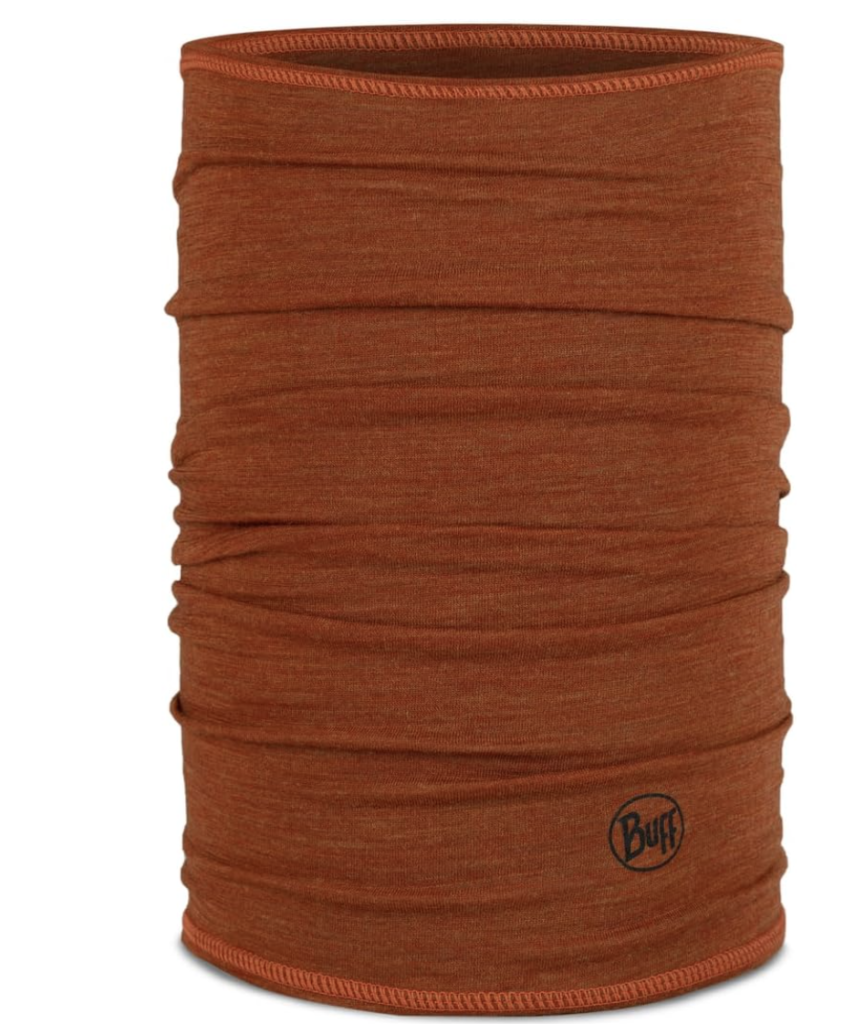
Neck Gaiter: Neck gaiters are a super versatile piece of winter hiking clothing. I mainly wear mine around my neck when it’s really cold or windy so it protects my neck and so I can easily pull it up over my face. But you can also wear it around your ears like a headband, make a makeshift beanie, and a lot more. I have both a merino wool and fleece neck gaiter and love them both.
Underwear
I didn’t invest in “hiking” underwear for years but I it has been a nice investment. I like knowing the actual closest layer to my skin isn’t cotton and will dry quickly. These layers are all comfortable and perfect for hiking.
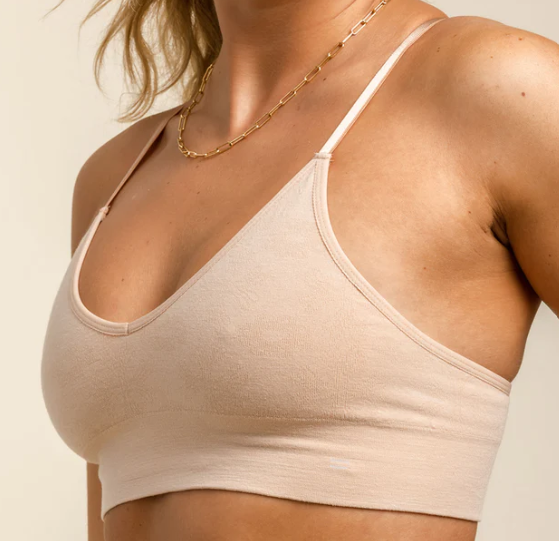
Branwyn Merino Wool Bra: I recently got this merino wool bra and love it. They have two different versions, the one I have is more of a bralette and the other is for bustier women. It never smells, doesn’t stretch out and is just a great, overall adventure bra.

Branwynn Merino Wool Underwear: From the same brand, I bought their merino wool underwear and also love it. It’s nice to have underwear that is odor resistant, is comfortable, and dries quickly in case it were to get wet from sweat or snow, especially as it’s the closest layer to your skin.

Exofficio Underwear: I’ve been wearing Exofficio underwear on my hikes for years. They are quick drying and great for outdoor adventures.
If you found this post about Winter Hiking Clothes for Women helpful, make sure to check out these posts:
- Essential Winter Gear To Pack on Your Hike
- How To Start Winter Hiking for Beginners
- 5 Ways to Stay Safe When Hiking Alone


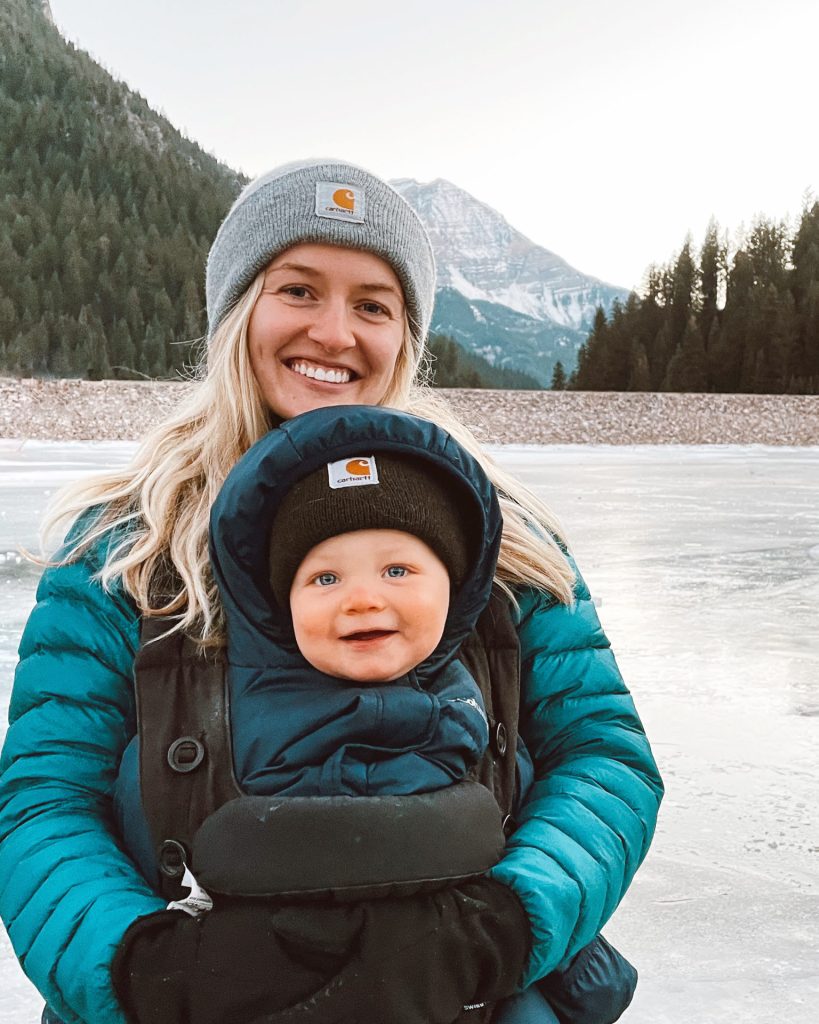
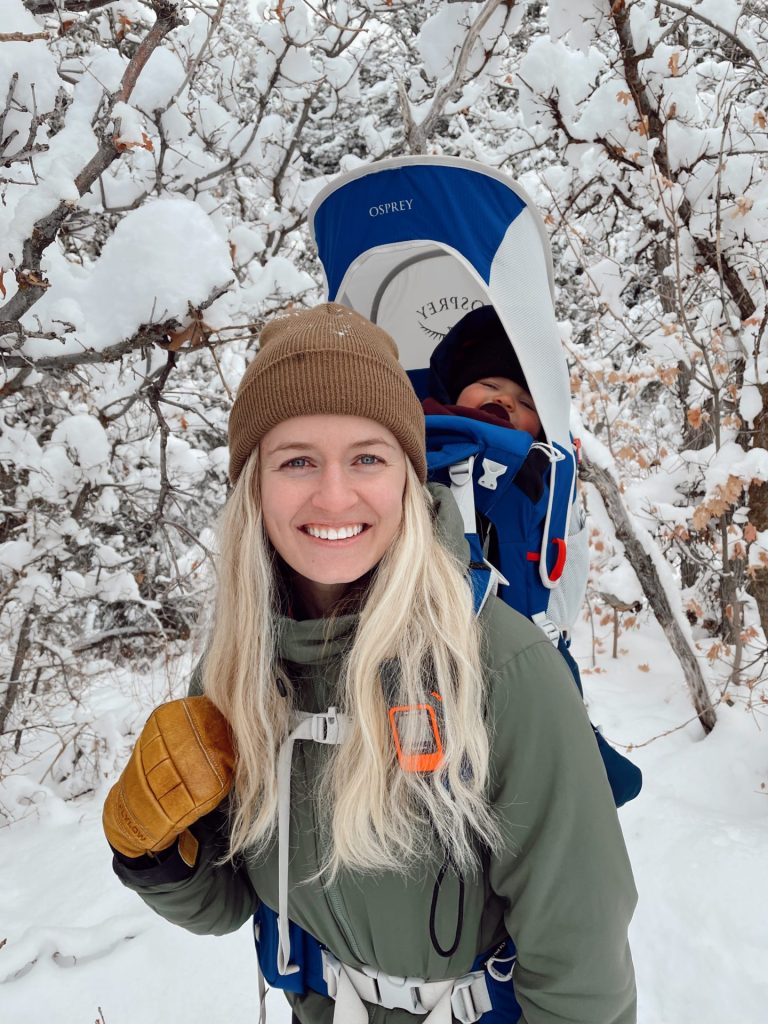
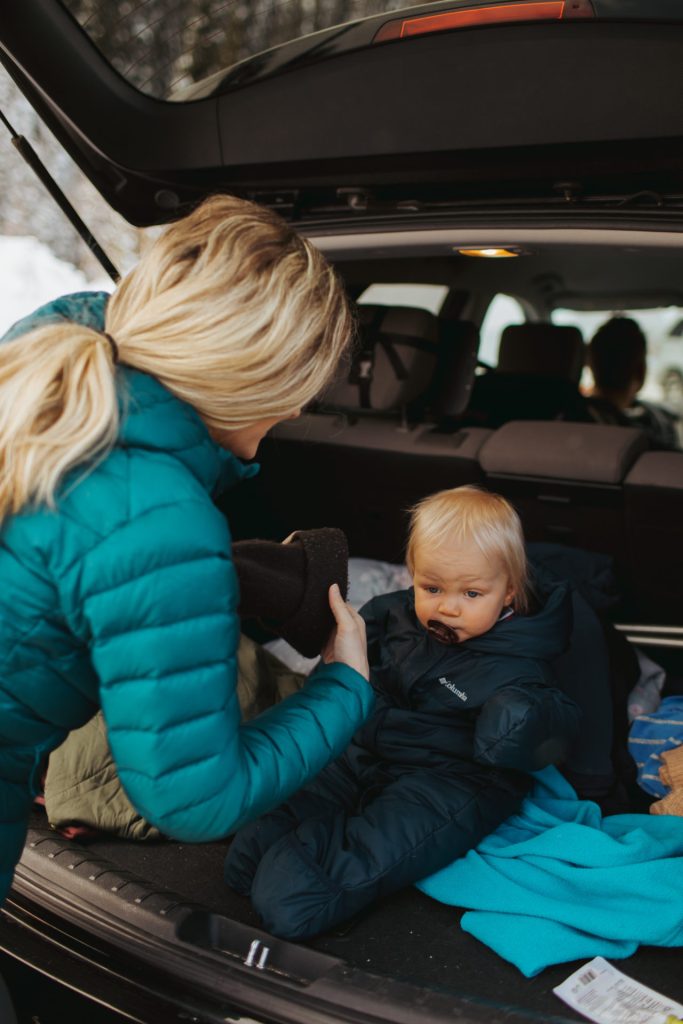
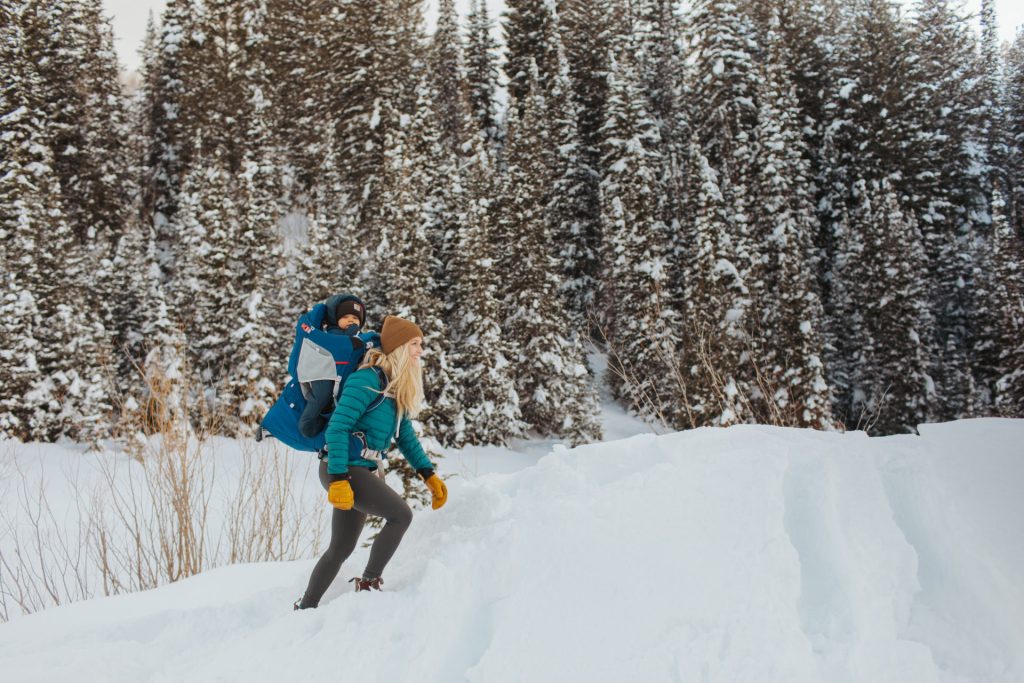

Pingback: How To Wash Your Down Jacket - Hailey Outside